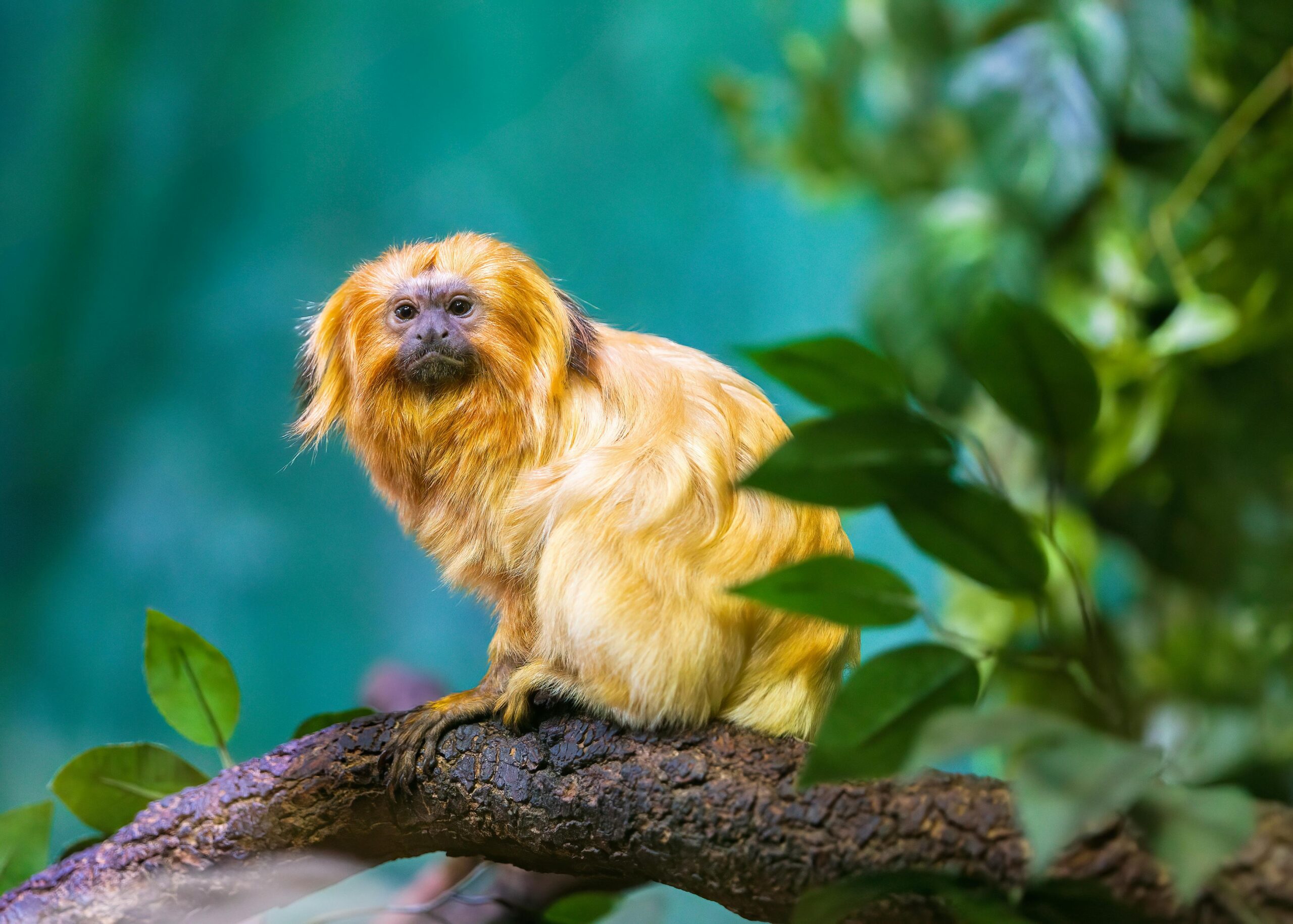For once, the news cycle isn’t all doom, gloom, and “oh no, not again.” In 2025, some of the planet’s most iconic (and adorable) animals are pulling off the ultimate comeback tour—like Taylor Swift, but with more fur and fewer sequins. From fuzzy sea otters reclaiming the California coast to bison stomping through European forests like they never left, nature is throwing us some seriously needed wins.
And honestly? We’re here for it. These aren’t just feel-good stories—they’re proof that with a little effort (and a lot of patience), wildlife can bounce back in bold, unexpected, sometimes slightly chaotic ways. Whether you’re a casual hiker, a hardcore conservation nerd, or just someone who needs something hopeful to talk about at brunch, these 13 wildlife comebacks are guaranteed to lift your spirits—and maybe make you want to plant a tree or two.
1. Golden Lion Tamarins Swing Back in Brazil
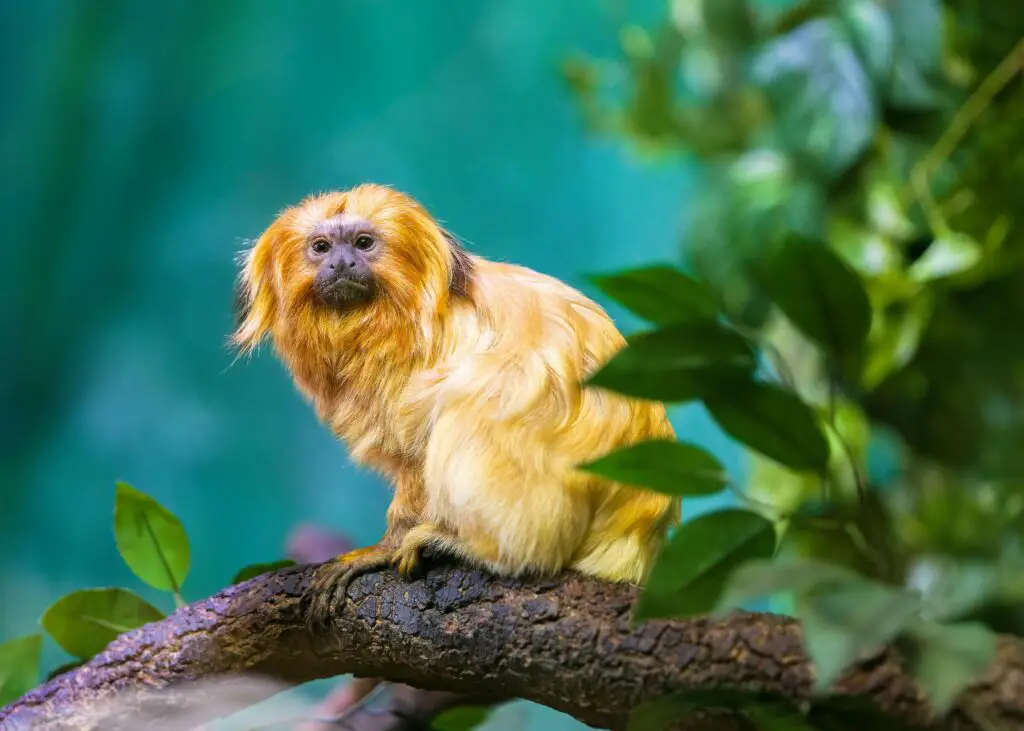
These tiny, neon-orange primates look like something Pixar would animate, but their real-life comeback is even more dramatic. Native to Brazil’s Atlantic Forest, golden lion tamarins were once down to just a few hundred individuals due to deforestation and illegal pet trading. Now? Thanks to major habitat restoration and protected corridor efforts, they’re making a vibrant return. According to Rainforest Trust, their numbers have rebounded to over 3,000—and growing.
One big win came from the creation of treetop bridges that connect fragmented forest patches, letting tamarins safely explore and expand their range. These monkey highways are basically the cutest infrastructure project in Brazil. And the animals are thriving—forming new groups, raising babies, and rebalancing the ecosystems they call home. They’re still endangered, but the comeback trajectory is strong and full of promise. It’s a reminder that when conservation and creativity come together, species on the brink can bounce back in big, furry, flamboyant style. Honestly, they’re just here to be fabulous—and survive. Respect.
2. European Bison Are Back and Buffer Than Ever

The original gym bros of the forest are making a slow-motion, hoof-stomping comeback across Eastern Europe. After nearly going extinct in the early 20th century, European bison have been reintroduced to countries like Poland, Romania, and Germany, where they’re now thriving in wild, managed herds. According to The Sun, these living tanks are helping regenerate forests, creating “microhabitats” by knocking down trees and clearing underbrush for smaller animals.
Basically, they’re nature’s bulldozers—with a better PR team. Conservationists have been using rewilding tactics to bring them back, and the results are both ecologically and aesthetically glorious. They’re becoming a key part of biodiversity strategies across Europe, all while looking like they could star in a prehistoric action movie. The best part? These bison are now roaming freely in areas where they haven’t been seen in centuries. So if you’re planning a Eurotrip this year, skip the overpriced Eiffel Tower selfie and go find yourself a bison. They’re chunky, majestic, and possibly judging your hiking shoes.
3. Sea Otters Are Back in Northern California—and Thriving
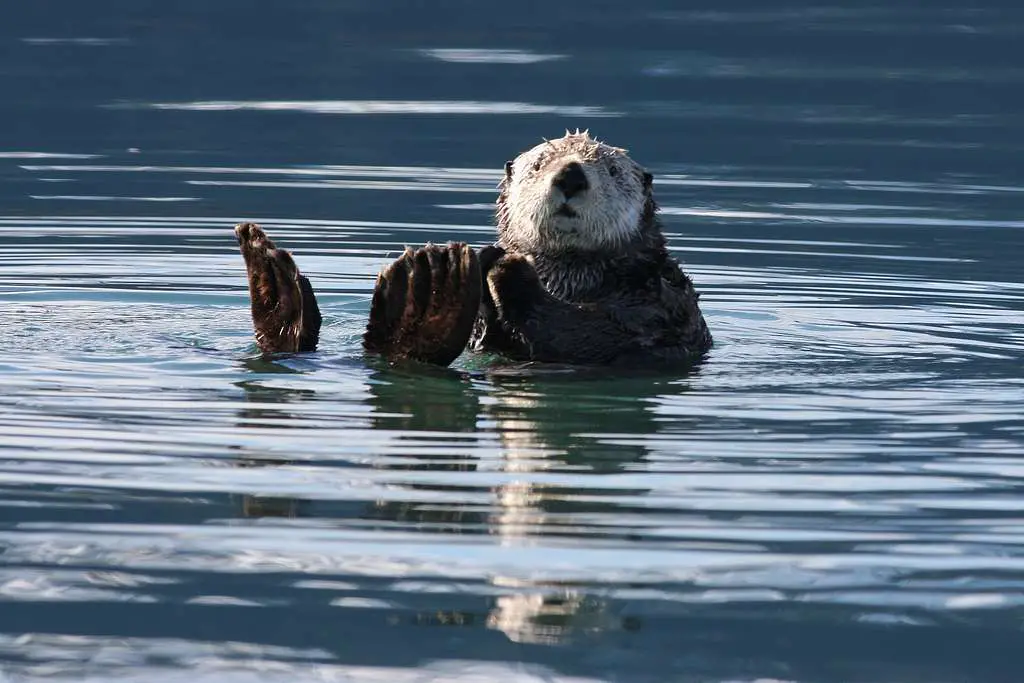
Sea otters are officially reclaiming their California coastline real estate like furry little moguls. After being nearly hunted to extinction in the 19th century for their ultra-soft pelts, these adorable aquatic fluffballs are bouncing back in big numbers. In fact, as High Country News reports, their population has not only stabilized but is expanding into previously uninhabited estuaries and bays.
But it’s not just their cuteness that’s getting headlines. Sea otters are essential to the health of kelp forests, since they munch on sea urchins that would otherwise turn those lush underwater jungles into bald patches. Their return has led to a dramatic resurgence in kelp, fish, and general underwater good vibes. Scientists even say otters could help fight climate change by keeping coastal ecosystems more resilient. So yeah, they’re eco-heroes in wetsuits. Their comeback is a reminder that if you protect one keystone species, entire habitats can thrive. Plus, who doesn’t want more videos of sea otters floating around holding hands?
4. Beavers Are Redesigning Rivers Like Little Furry Engineers

Beavers are out here flipping the script from “pest” to “planet-saving engineer.” Once nearly wiped out across North America for their fur, these toothy little dam-builders are now being invited back to landscapes where they’d been long gone. According to Axios, their comeback is part of a climate resilience push to restore wetlands, reduce drought, and stabilize river flows.
Turns out, beaver dams don’t just annoy farmers—they create wetlands that store water, support biodiversity, and even prevent wildfires. In places like Utah and Oregon, conservation groups are literally helicopter-dropping beavers into old habitats to kick-start ecological healing. (Yes, it’s as ridiculous and amazing as it sounds.) Once they’re settled in, beavers just get to work. No unions, no overtime—just pure, chewy log-based hustle. They’re also boosting fish populations and cleaning up polluted waterways. From nuisance to necessity, their rebranding arc is the stuff of LinkedIn legend. Next time you see a muddy stream with a pile of sticks? Respect the architect.
5. Humpback Whales Are Singing Their Way Into New Waters
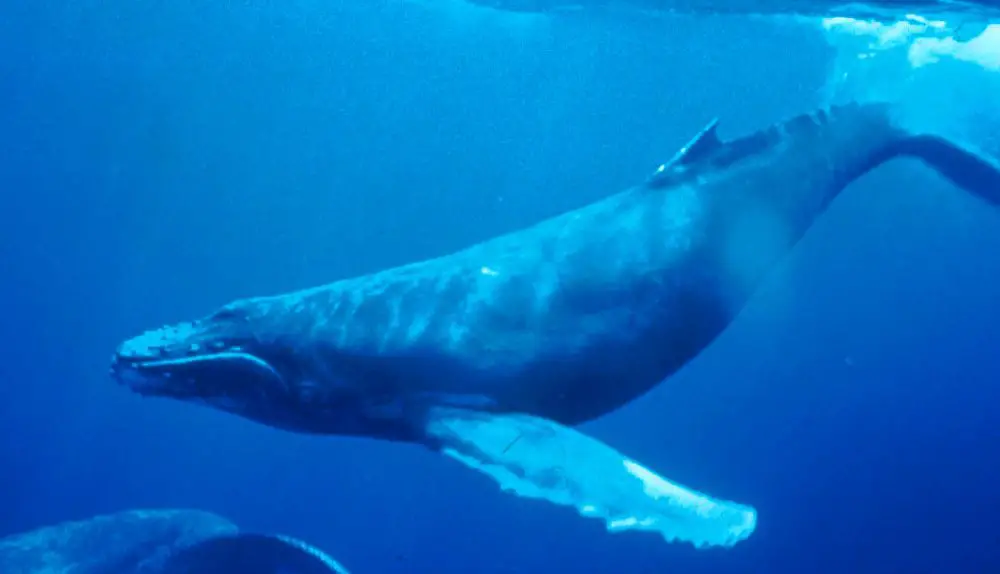
Once the tragic poster children of industrial whaling, humpback whales are now making a splash for all the right reasons. After decades of international protection and no-hunting zones, humpback populations are bouncing back—so much so that they’re expanding into new feeding grounds. As Explore Beaufort reports, scientists are spotting record numbers in parts of the North Atlantic and Southern Hemisphere, including places where they hadn’t been seen in decades.
And no, it’s not just a fluke. These whales are thriving thanks to reduced shipping traffic, cleaner waters, and international cooperation to protect their migratory routes. In Iceland and parts of New Zealand, tour operators are now seeing more whales than ever, and with fewer propeller injuries, to boot. Their haunting underwater songs are returning like old radio hits, echoing across ecosystems that had gone silent. Some researchers even say these vocal powerhouses are evolving new call patterns in response to changing ocean environments. So yeah—humpbacks are back, and they’re remixing the oceans one chorus at a time.
6. Gray Wolves Are Howling Back in Colorado
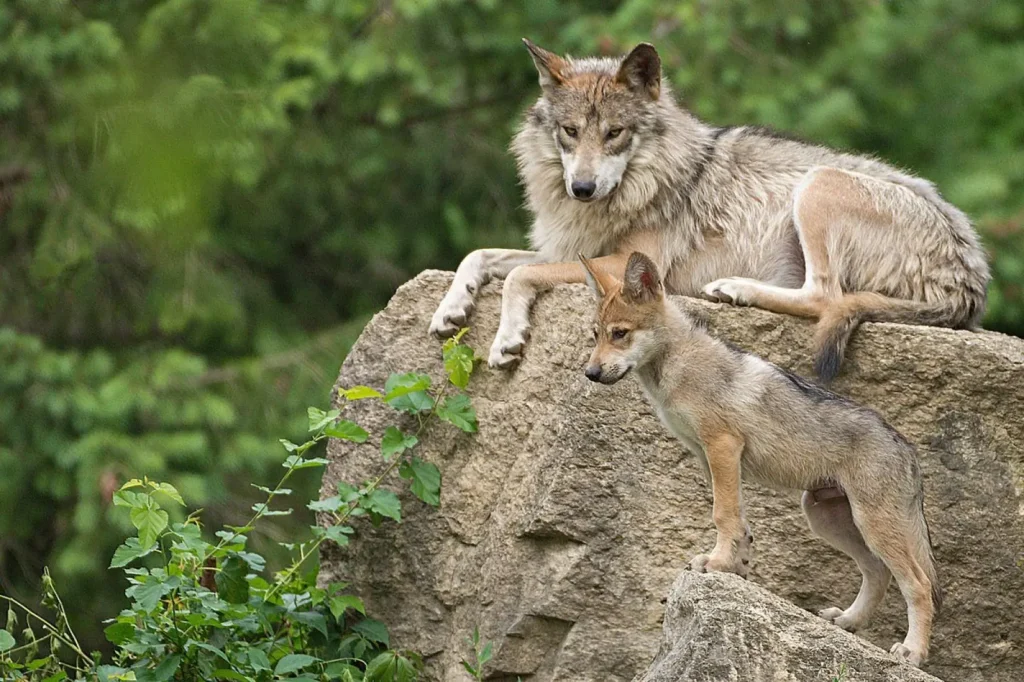
After being hunted, trapped, and basically ghosted from the Rockies for decades, gray wolves are staging a fierce reentry into Colorado—and they’re not being subtle about it. Thanks to a historic 2020 ballot initiative and reintroduction efforts that followed, wolves are once again roaming the wild west like they own it. Which, to be fair, they kinda did before humans got territorial. Now, packs are starting to form, howl, and yes—occasionally mess with ranchers’ vibes.
But love them or fear them, their comeback is ecologically iconic. Wolves help control elk and deer populations, which means forests and grasslands have a chance to recover from overgrazing. More trees, more biodiversity, more balance—it’s like one predator kickstarts a whole healing cycle. Not to mention, spotting a wild wolf is one of those bucket-list moments that makes even the chillest hiker feel like they’re in a Nat Geo documentary. Of course, not everyone’s thrilled—ranchers have concerns, and wildlife officials are juggling compensation plans and collar trackers like pros. Still, the howl heard around the Rockies is back, and it’s turning heads. One minute they were mythic beasts of the past, now they’re back on trail cams and TikTok. Never underestimate a comeback with teeth.
7. Puffins Are Reclaiming the Cliffs in the UK
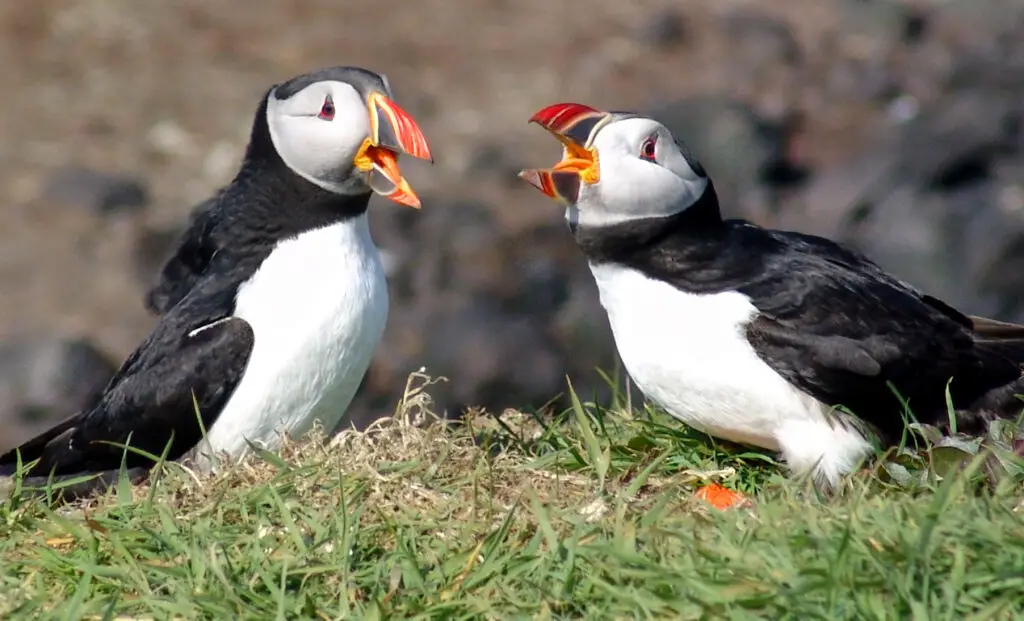
You’d think puffins—with their neon beaks and awkward land waddle—wouldn’t be built for a fight. But these seabirds are out here proving resilience can be adorable. After years of decline due to overfishing, pollution, and invasive rats snacking on their eggs, puffin colonies are making a major return to the coastal cliffs of the UK. And yes, they’re still dressed like little tuxedo-wearing clowns.
Their bounce-back story involves some real conservation hustle: rat removal, fishery management, and even volunteers hand-feeding chicks during harsh breeding seasons. All that TLC is paying off—puffin numbers are up, burrows are bustling, and their quirky courtship dances are lighting up remote cliffs once more. If you’ve never seen a puffin flying (spoiler: it’s chaotic and hilarious), 2025 is your year. Birdwatchers are flocking in record numbers to spots like Skomer Island and the Farne Islands, boosting eco-tourism in the process. Even schools are getting involved with puffin monitoring projects—because who wouldn’t want to track puffin drama as homework? This isn’t just a comeback; it’s a full-blown redemption arc in feathers. Long live the seabird glow-up.
8. Jaguars Are Tiptoeing Back Into the American Southwest
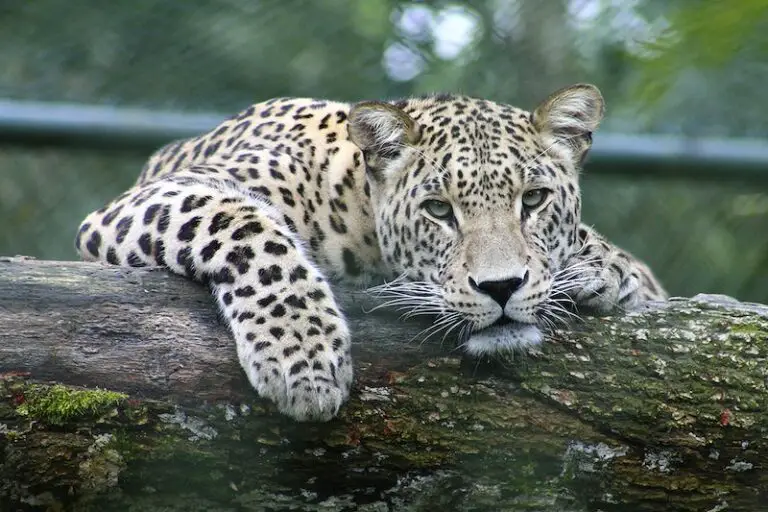
If you thought jaguars were strictly a Central or South American thing, think again. These big cats are sneaking their way back into Arizona and New Mexico, reclaiming territory they haven’t regularly inhabited in over a century. It’s a quiet comeback—jaguars are shy, elusive, and excellent at avoiding humans—but sightings and trail cam footage are growing.
The return is mostly thanks to expanded wildlife corridors and protected borderlands that allow them to slip north from Mexico without hitting a wall—literally or metaphorically. And their presence could be a huge boost to local ecosystems. As apex predators, jaguars keep other populations in check, helping balance the entire food chain. Plus, their return challenges the whole idea of what “native species” even means. Conservationists are cautiously optimistic, knowing one wrong policy or development project could scare them off again. But for now, the ghost cats of the desert are making their move. With stealth, grace, and paws the size of saucers, they’re slowly reclaiming their ancient range. It’s giving “queen returns to her kingdom” energy, and we’re here for it.
9. Monarch Butterflies Are Fluttering Into the Spotlight Again
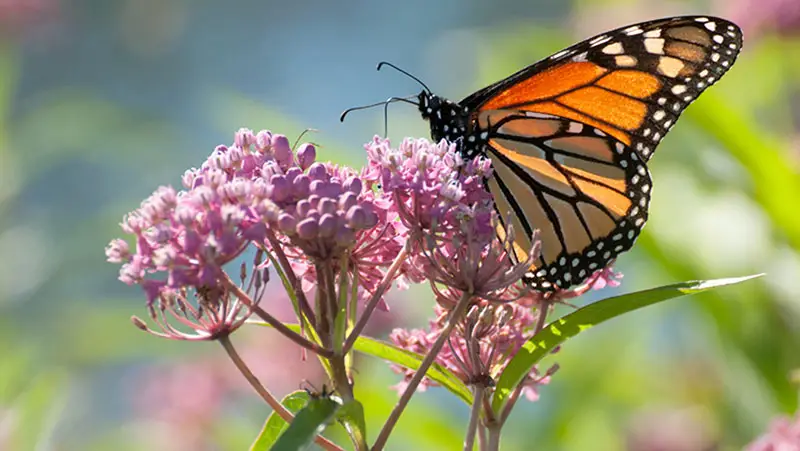
Let’s hear it for the drama queens of migration—the monarch butterflies. These fragile, fluttery icons were on the brink not long ago, with numbers plummeting due to pesticide use, climate change, and disappearing milkweed (their one true love). But recent conservation efforts, backyard planting campaigns, and shifts in land management are giving monarchs a second chance at glory.
This year, they’re not just showing up—they’re showing off. Record sightings have been logged across parts of the U.S. and Mexico, and their iconic orange-and-black swarms are dazzling roadsides, meadows, and Instagram feeds alike. Milkweed sales are booming as more people plant pollinator-friendly gardens, and monarch tagging programs are turning average folks into citizen scientists. It’s not a guaranteed victory—these butterflies are still fragile, and one bad season can throw things off. But this comeback feels symbolic, like nature herself saying, “I’m not done yet.” Watching a monarch land on a flower you planted? Pure magic. Pure hope.
10. Alligators Are Thriving in Places No One Expected

Once nearly hunted to extinction for their hides and misunderstood vibes, American alligators are now thriving—and not just in the swamps. In 2025, they’ve officially been spotted in places that make people go, “Wait, seriously?” Like golf courses. And suburbs. And yes, one memorable sighting in a hotel fountain in Georgia.
But don’t panic—they’re not on a rampage. Their recovery is actually one of the biggest success stories of the Endangered Species Act. Strong protections, habitat conservation, and public education have turned gators into a southern conservation poster child. They’ve rebounded so well that some areas are now managing overpopulation concerns. Ecologically, they’re top-tier. Alligators maintain wetland health, control invasive species, and create “gator holes” that help other animals survive droughts. Sure, they might photobomb your vacation, but they’re also low-key environmental MVPs. Just maybe don’t try to pet one.
11. Saiga Antelope Are Bouncing Back in Central Asia

With their oversized snoots and permanently startled expressions, saiga antelope look like Star Wars creatures who wandered into Kazakhstan. But don’t let their goofy aesthetic fool you—they’ve survived ice ages, poachers, and a devastating disease outbreak that once wiped out half their population in weeks. Now? They’re staging one of the biggest wildlife glow-ups of the decade.
Conservationists, local communities, and governments have teamed up to create safe zones, enforce anti-poaching laws, and support research on disease prevention. The payoff? Populations are soaring, especially in Kazakhstan, where entire herds are filling the steppes once more. They move in great, galloping waves—tiny hooves drumming the earth like nature’s own drumline. This comeback is a reminder of just how fast nature can recover when given half a chance and a little help. Plus, their return supports predators like wolves and eagles, creating a stronger ecosystem overall. The saiga isn’t just surviving—it’s thriving. And those noses? Still iconic.
12. Great White Sharks Are Reclaiming the Northeast

Cue the Jaws theme—great white sharks are making waves (literally) in the waters off New England and Long Island. Once rare in these parts, they’re now turning up more often thanks to growing populations of seals, their favorite snack. It’s a case of the food web realigning itself after decades of disruption, and the apex predator is back at the top.
Shark sightings might freak out beachgoers, but ecologists are thrilled. Their presence signals a healthy marine system, where fish stocks are rebounding and predator-prey relationships are returning to balance. Plus, it’s inspiring new research, better tracking tech, and way more interest in ocean conservation. Just don’t expect a beach closure every time a fin breaks the surface—sharks aren’t lurking to ruin your vacation. They’re just doing their thing, keeping seals humble and ecosystems in check. And honestly? They’ve got the drama, the mystique, and the Instagram aesthetic of a true wildlife comeback.
13. Bighorn Sheep Are Owning the Cliffs Again
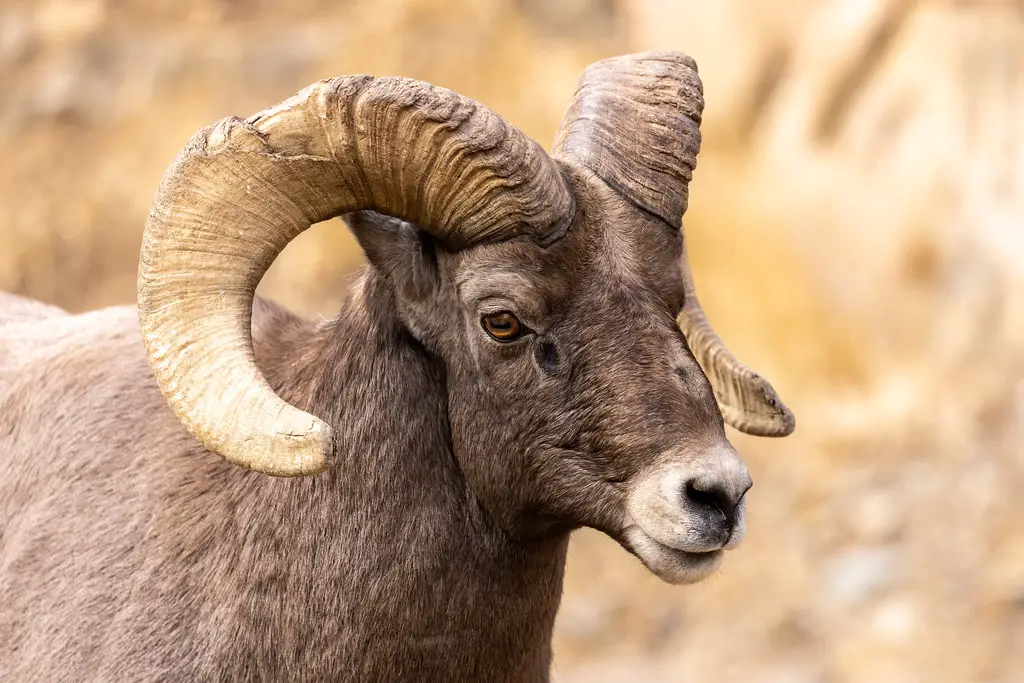
Bighorn sheep, aka the extreme athletes of the mountain world, are back to flexing their headbutting skills across the Western U.S. Once driven to near extinction by overhunting and disease from domestic livestock, they’re now making a high-altitude comeback. Their curling horns and cliff-scaling agility have returned to national parks and wilderness zones in states like Nevada, Montana, and Colorado.
Reintroduction efforts, habitat protections, and improved disease monitoring have all played a role. These sheep don’t just survive—they thrive in places most humans would need ropes and Red Bulls to even attempt. You’ll find them grazing precarious ledges like it’s no big deal, peering down at you like majestic goats with a superiority complex.
Their return helps balance plant life, supports predator species like cougars, and boosts eco-tourism in rural areas. Hikers get stoked to spot them. Researchers get excited about the gene pool’s comeback. And honestly? The horns alone are worth the celebration. Welcome back, mountain kings.

